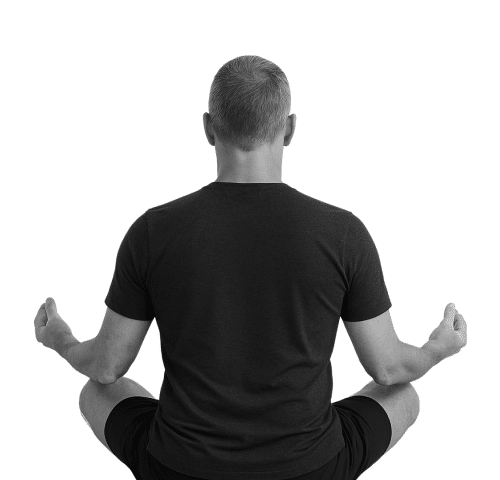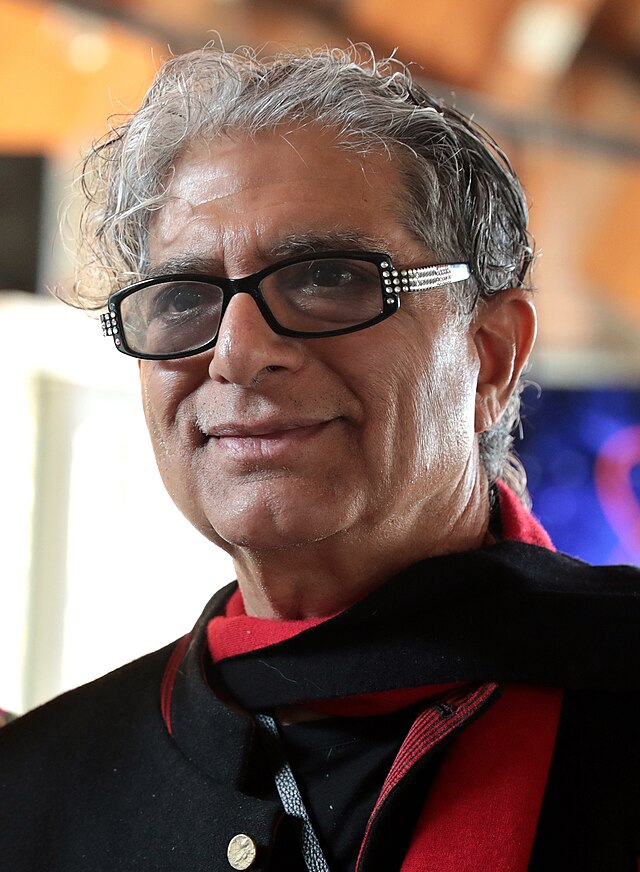Gary Brecka Breathwork Routine – Independent Insight Based on Public Info (2025)

The Breathing Habit That’s Gaining Attention
Gary Brecka, known for his focus on human performance and wellness, has developed a structured breathwork routine that many people follow to improve energy and focus. Based on his public discussions and demonstrations, the Gary Brecka breathwork routine highlights controlled breathing as a way to support both physical and mental health. This article provides a straightforward overview of Gary Brecka's breathwork guide, including his 8-minute breathwork practice and the potential benefits often associated with it.
- Last Updated: November 29, 2025
- Breathwork Philosophy
- Prepare Posture and Mindset
- 30 Deep Power Breaths (Round 1)
- Breath Hold
- Recovery Inhale
- Rounds 2 and 3
- Post-Breathwork Visualization
- Reasons To Follow The Gary Brecka Breathwork Routine
- Hydration and Minerals
- Supplements in the Morning
- Exercise With Oxygen Therapy
- Cold Exposure
- Benefits of a Breathwork Routine
-
-
Breathwork Philosophy
Gary Brecka believes that oxygen is one of the most important factors for maintaining health and longevity. He often explains that when the body is fully oxygenated, it performs better both physically and mentally. This belief is at the heart of his daily wellness habits, with breathwork serving as a key practice to boost focus, improve energy, and support cellular health.
- Focus on oxygenation: Brecka teaches that most people breathe too shallowly, which limits oxygen reaching their cells. He emphasizes that deep and intentional breathing allows the body to function more efficiently by improving circulation, reducing stress, and slowing signs of aging.
- Daily breathwork practice: Regardless of his schedule, Brecka commits to doing deep breathing every day. He believes that taking time for focused breathwork helps refresh his mind, stabilize his energy, and improve his overall sense of well-being. It’s one practice he never skips, no matter how busy life gets.
- Free biohack for better health: Brecka often refers to breathwork as a free yet powerful way to improve health. He explains that many people use only a fraction of their lung capacity, missing out on the benefits of proper oxygen flow. Practicing deliberate breathing can reduce anxiety, improve mood, and enhance recovery after physical or mental strain.
- Inspired by science and Wim Hof’s method: His breathwork philosophy draws inspiration from Wim Hof’s breathing method but is adjusted to be simpler and easier for beginners. Through his podcast The Ultimate Human and partnerships with brands like 10X Health System and Breathe Bitch, Brecka shares how consistent, science-backed breathwork can positively influence overall health and performance.
Gary Brecka’s approach to breathing highlights how such a simple, everyday action can dramatically improve energy, clarity, and long-term wellness. His commitment to daily breathwork serves as a reminder that health often begins with the most basic habit—how we breathe.
-
Prepare Posture and Mindset
Before beginning his breathwork, Gary Brecka focuses on creating the right physical and mental environment. He believes that setting up a comfortable position and a calm mindset is key to getting the full benefits of deep breathing. This stage helps the body relax and prepares it to respond positively to increased oxygen flow.
- Find a comfortable position: Brecka suggests sitting upright in a chair with a supportive back, especially for beginners. Those who prefer can also lie down on a flat surface to stay relaxed and steady throughout the breathing session.
- Relax your body: Place your hands gently on your knees or by your sides. Loosen your shoulders and let your muscles soften to allow your breathing to deepen naturally.
- Stay aware of sensations: During the session, some people may feel lightheaded or notice a tingling feeling. Brecka explains that this happens as oxygen and carbon dioxide levels in the body shift.
- Keep a calm mindset: He advises accepting these sensations without worry, staying present, and continuing the practice with steady focus.
This stage helps the body ease into the breathwork routine and strengthens the connection between body and mind. Brecka’s approach shows that preparation is not just about posture but also about mental readiness to fully experience the benefits of deep breathing.
-
30 Deep Power Breaths (Round 1)
Once posture and mindset are set, Gary Brecka begins the first round of breathing, which focuses on maximizing lung capacity and oxygen flow. This stage helps activate the diaphragm and prepares the body for the deeper relaxation and focus that follow.
- Inhale deeply and fully: Take a strong, full breath that fills your lungs from the bottom to the top. Brecka recommends engaging the diaphragm completely, expanding both the lower abdomen and upper chest to make sure every part of the lungs is used.
- Use your natural breathing path: You can breathe in through your nose, your mouth, or alternate between the two. Brecka emphasizes that the method is less important than ensuring each breath draws in as much air as possible.
- Release gently: Allow the exhale to happen naturally without pushing it out forcefully. This relaxed release helps maintain steady breathing and prevents tension from building up in the body.
- Repeat consistently: Continue this cycle of deep inhaling and relaxed exhaling thirty times. These repeated breaths help increase oxygen levels in the blood while reducing carbon dioxide, creating a feeling of clarity and alertness.
This first round sets the tone for the rest of Brecka’s breathwork routine. It helps the body adjust to a higher intake of oxygen, promotes balance in oxygen and carbon dioxide levels, and builds the foundation for better focus and energy in the following stages.
-
Breath Hold
After completing the first round of deep breathing, Gary Brecka moves into a breath-holding phase. This stage helps train the body to use oxygen more efficiently while calming the mind and improving focus. It’s a technique adapted from the Wim Hof Method and plays an important role in his overall breathing practice.
- Hold after the final exhale: Once the last breath of the first round is released, Brecka recommends holding your breath with empty lungs. Close your eyes and relax your body, letting yourself settle into stillness.
- Shift your attention outward: Instead of focusing on the urge to breathe, he advises directing your awareness to external details such as distant sounds or subtle sensations around you. This helps keep the mind calm and prevents overthinking.
- Add light pressure to the tongue: Gently pressing your tongue to the roof of your mouth can help keep the airway relaxed and slightly open while holding your breath.
- Stay as long as comfortable: Hold until you naturally feel the need to breathe again. During this time, carbon dioxide levels increase, signaling your body to absorb oxygen more effectively in the next inhale.
This phase helps reset the body’s oxygen and carbon dioxide balance, creating a mild stress response that strengthens breathing efficiency. Brecka often shares through his work on The Ultimate Human podcast that mastering this hold prepares both the body and mind for deeper focus and improved oxygen absorption.
-
Recovery Inhale
The recovery inhale is the final step of Gary Brecka’s first breathwork round. It helps the body transition from oxygen depletion to renewal, restoring energy and focus before continuing the practice.
- Take a deep breath in: Once you feel the natural urge to breathe again, inhale fully and allow your lungs to fill from the bottom to the top. This helps re-oxygenate your body after the hold phase.
- Pause briefly with full lungs: Brecka advises holding the air for a short moment to let the oxygen circulate and settle. During this pause, he suggests keeping the mind still and free from distraction.
- Exhale with ease: Slowly release the breath, allowing your body to soften and relax. This helps reset your breathing rhythm and brings a feeling of calm before the next round begins.
This step completes the breathing sequence with a sense of calm and lightness. It helps the body reset, clears mental tension, and prepares you to move confidently into the next round of breathwork.
-
Rounds 2 and 3
After completing the first set of breathing and recovery, Gary Brecka continues with two additional rounds to deepen oxygenation and strengthen focus. Each round follows the same structure but builds greater control, awareness, and endurance with every cycle.
- Repeat the breathing sequence: Begin with another 30 deep and steady breaths, followed by a full exhale and breath hold. Then finish the round with a recovery inhale before starting the next one.
- Follow the three-round pattern: Brecka typically completes three full rounds of 30 breaths each morning, maintaining consistent rhythm and timing throughout the process.
- Adjust the intensity if needed: The complete session usually lasts between four and eight minutes. Beginners are advised not to start at 30 breaths right away but instead build tolerance gradually.
- Start small and progress daily: If new to breathwork, begin with three rounds of five breaths per round and slowly increase the count as your comfort and lung capacity improve.
Repeating these rounds helps the body adapt to oxygen-rich states while improving mental clarity and stress control. Brecka’s structured approach encourages steady progress, making the practice accessible to both beginners and experienced breathwork enthusiasts.
-
Post-Breathwork Visualization
After completing the main breathwork rounds, Gary Brecka often adds a short mental exercise to help set a positive tone for the day. This optional step combines the calm oxygen-rich state created by breathwork with intentional focus, allowing the mind to stay centered and clear.
- Take a moment after the final hold: Brecka recommends using the last breath-hold of the session to focus on positive thoughts. This is an opportunity to picture the day going well while the body remains calm and relaxed.
- Visualize success and calmness: During this moment, he suggests imagining tasks, meetings, or personal goals unfolding smoothly. The purpose is to train the mind to connect deep breathing with optimism and control.
- Keep your focus inward: Brecka reminds people to stay connected to their breath rather than get lost in thoughts about the day. This helps maintain the sense of clarity created through the breathing practice.
Once the visualization ends, return to normal breathing and continue with your day. This short mental pause, often shared in his Instagram tips, helps reinforce a clear and focused mindset, leaving you energized and mentally prepared for what’s ahead.
-
Reasons To Follow The Gary Brecka Breathwork Routine
Gary Brecka’s breathwork method is designed to make advanced breathing science easy to follow for anyone. It’s a practical daily practice that helps reset the body, sharpen focus, and improve oxygen efficiency from the very start of the day.
- Accessible and effective method: Brecka’s technique is a simplified version of the Wim Hof breathing method, adapted through his brand Breathe Bitch to make it more approachable and easier to maintain as part of a morning habit.
- Oxygen balance and stress adaptation: The deep breathing process increases oxygen levels while the breath holds create a short period of low oxygen and higher carbon dioxide. This mild stress trains the body to use oxygen more effectively once normal breathing resumes.
- Best time to practice: Brecka recommends performing this exercise in the early morning. Doing it shortly after waking helps stabilize mood and sharpen mental clarity for the rest of the day.
- Within 30 minutes of waking: After a night of shallow breathing, your body naturally craves oxygen. Performing this routine soon after waking acts as a natural energizer and improves alertness.
- Additional benefits from sunlight: Brecka often practices this outdoors to combine the benefits of fresh air and sunlight, which can help regulate circadian rhythm and boost overall well-being.
This simple and structured breathwork method can set a positive tone for the day while improving focus, energy, and oxygen efficiency. It’s one of the easiest ways to start the morning feeling balanced, awake, and ready to take on the day.
-
Hydration and Minerals
Before starting his morning breathwork, Gary Brecka makes sure his body is well-hydrated and ready for oxygen work. Proper hydration helps blood flow, enhances focus, and supports the body’s ability to handle the breathing exercises that follow.
- Hydrating before breathwork: Brecka begins his day with a large glass of mineralized water. He often adds a pinch of unrefined sea salt, such as Celtic or Baja Gold, to restore essential electrolytes that support muscle and nerve function.
- Hydrogen-rich water option: He also promotes hydrogen-rich water, which he considers beneficial for morning hydration. Hydrogen water is believed to have antioxidant properties and may help neutralize oxidative stress.
- Benefits of minerals and fluids: Maintaining fluid balance and mineral intake supports proper circulation and ensures oxygen delivery during breathwork. Dehydration can reduce blood flow, limiting the effectiveness of breathing exercises.
While this step isn’t mandatory for his breathing routine, Brecka views it as part of an overall wellness habit that enhances both hydration and performance throughout the morning.
-
Supplements in the Morning
Gary Brecka begins his mornings with a few key supplements that help his body function at its best. These additions are not directly linked to breathwork but are meant to create a strong physical foundation that supports energy, recovery, and focus throughout the day.
- Daily supplement support: Brecka often takes DHEA, a natural hormone precursor that helps balance hormones, maintain energy levels, and support muscle health. This supplement can be especially beneficial as the body’s natural production of DHEA decreases with age.
- Omega-3 fatty acids: He includes omega-3 fish oil early in the morning, focusing on EPA-rich varieties. Omega-3s are known to improve brain function, support cardiovascular health, and reduce inflammation, all of which can enhance oxygen use and overall vitality.
- Essential vitamins and minerals: Brecka also values a consistent intake of vitamin D3, magnesium, and B-complex vitamins. The methylated forms of B12 and folate are particularly emphasized because they support brain function, energy metabolism, and nervous system balance.
- Custom supplementation: His company, OptimOZ, provides customized multivitamin options designed to meet individual needs. This approach helps users address any nutritional deficiencies while supporting optimal performance and daily well-being.
While breathwork on its own delivers powerful results, Brecka believes that combining it with smart supplementation helps strengthen the body’s foundation, supporting better oxygen efficiency, recovery, and focus.
-
Exercise With Oxygen Therapy (EWOT)
Gary Brecka sometimes enhances his breathwork with Exercise With Oxygen Therapy (EWOT), a practice that increases oxygen intake during light activity. This method helps the body absorb more oxygen and can be a powerful way to support energy, focus, and recovery.
- How EWOT works: The routine involves using an oxygen concentrator or mask during low-intensity exercise or breathwork to supercharge oxygen delivery throughout the body. This increased oxygen saturation supports better circulation and overall vitality.
- Performance and recovery benefits: According to 10X Health System, higher oxygen levels from EWOT may improve endurance, brain function, and sleep quality while also helping muscles recover faster after activity.
- Part of the Superhuman Protocol: Brecka includes EWOT as one element of his “Superhuman Protocol,” which pairs magnetism, oxygen, and light exposure to encourage cellular repair and rejuvenation.
- Simple alternatives: He often notes that you don’t need expensive gear to experience benefits. Basic breathwork already increases oxygen levels, reduces stress, and activates the nervous system, EWOT is simply an optional enhancement for those who want a deeper experience.
EWOT serves as an add-on for those looking to intensify the benefits of oxygen-based routines, but Brecka emphasizes that consistent breathwork alone can still deliver remarkable results for health and well-being.
-
Cold Exposure and Other Free Habits
Gary Brecka often pairs his breathwork with natural practices that cost nothing yet offer powerful health benefits. These simple habits, when done consistently, support better circulation, energy, and mental clarity. They also fit easily into a morning routine for a refreshing start to the day.
- Cold exposure: After his breathing session, Brecka takes a cold shower or a short cold plunge. This helps lower inflammation, increases alertness through norepinephrine release, and energizes the body for the day ahead.
- Grounding practice: Spending a few minutes standing barefoot on the ground helps balance the body’s natural energy, reduce stress, and create a sense of calm and focus.
- Morning sunlight: Getting exposure to early sunlight supports circadian rhythm, boosts mood, and enhances oxygen delivery throughout the day. It also works well with his breathwork practice to improve mental clarity.
These daily habits help improve oxygen flow, blood circulation, and overall vitality. Brecka often reminds his audience that breathwork, grounding, sunlight, and cold exposure are simple and free ways to make a meaningful difference in health and performance.
-
Benefits of a Breathwork Routine
Gary Brecka’s breathwork routine does more than improve breathing. Practiced regularly, it can influence mood, focus, energy levels, and overall well-being. The method works by increasing oxygen flow throughout the body, activating the diaphragm, and helping the nervous system find balance.
- Instant energy and better mood: Deep breathing increases oxygen in the blood and brain, creating a natural energy boost. The surge of oxygen supports dopamine production, helping lift mood and motivation without the need for caffeine.
- Sharper mental clarity: The rise in oxygen and reduction of carbon dioxide help clear mental fog and improve concentration. Brecka explains that proper breathing engages the parasympathetic nervous system, which helps calm the mind and improve focus.
- Stress relief and nervous system balance: Controlled breathing shifts the body out of “fight or flight” mode and into relaxation. Brecka notes that it helps lower cortisol, creating a more balanced emotional state and reducing stress naturally.
- Improved digestion and detox support: Deep breathing activates the diaphragm, which massages internal organs and supports digestion. This process encourages nutrient absorption, improves circulation, and assists in clearing toxins from the body.
- Stronger immune response: Increased oxygen in the bloodstream helps reduce inflammation and support the immune system’s ability to fight illness. Brecka believes that oxygen-rich blood plays a key role in overall healing and recovery.
- Hormonal and metabolic balance: Brecka highlights that consistent breathwork can improve hormone regulation and metabolism, especially when done in the morning. It supports better cortisol rhythm, energy balance, and healthy weight management through improved oxygen use.
The practice emphasizes how intentional breathing can enhance both physical and mental performance. Consistent breathwork helps the body stay balanced, energized, and ready to take on daily stress more effectively.
-






